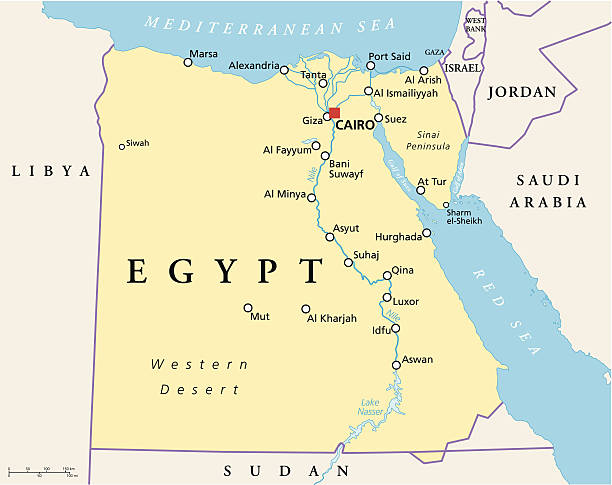The Nile River is the foundation of Ancient Egyptian civilization, carrying its waters from the Ethiopian Highlands and Central Africa to the Mediterranean Sea. Thanks to the great river, Egypt turned into a prosperous state of the Eastern Mediterranean in the III millennium BC and remained so until the Roman conquest in 30 BC. If it were not for the Nile, Egypt would be almost uninhabitable with its negligible precipitation, and people would have never established the civilization.
The image below shows the majestic Nile River and nearby cities:

The Nile River is one of the most significant waterways on Earth, and it is no exaggeration to say that it is a prerequisite for the development of civilization in the ancient world. It all started with the fact that the climate of the Sahara Desert was getting drier every year. By the second millennium BC, it was almost no different from the weather conditions of the XXI century AD. With the increasing drought and the onset of the desert, people settled around water sources, using natural resources more intensively in oases and near the Nile. This is where their transition to agriculture took place in the VII-V millennia BC.
Traditionally, this river is associated only with Egypt, but many states such as Kenya, Rwanda, Ethiopia, Sudan, Tanzania, and Uganda are in its basin. It is worth noting that a little more than 20% of the Nile is located on the territory of Egypt, and the rest is in other regions. The central city along the Nile River is Cairo, home to one of the world’s wonders and the famous pyramids- the tombs of the pharaohs. The second-largest city, but essential in importance, is Alexandria, founded by Alexander the Great. He is also known for the legend of the Library of Alexandria and the abandoned lighthouse. There is also Luxor, and Thebes, where various ancient temples and colossi are located today. El Fayum, Beni Mazara, and El Minye are also not devoid of picturesque terrain and ancient monuments.
In fact, the Nile is one of the primary sources of the rapid development of agriculture in ancient Egypt. It is known that the first beginnings of the development of civilization and various forms of labor activity, such as agriculture along the Nile River, originated around about 6000-about 3150 BC (Mark). The flooding of the Nile occurred annually, and therefore agriculture near the river was the most reliable and productive in the country, which made it possible to make reserves in case of unforeseen circumstances. Mainly wheat was grown here, from which bread was baked, and barley for making beer (Kiger). The main technical crops were flax, which was used to manufacture many things, from ropes to the most delicate fabrics, and papyrus, a swamp plant, which was an export item (Kiger). The floods of the Nile River continue to serve as a source of life, fertility, and agriculture to this day.
Consequently, the economics of the states in ancient Africa directly depended on the Nile floods. For thousands of years, the river has supported a thriving population and continues to be the main reason for providing life in desert areas. Even though more than 90 percent of Egyptians live far from the Nile, but the fact remains that the river continues to provide fishing and agriculture development (National Geographic Society). In addition, the river was also the primary means of communication and a trade route connecting Africa with other equally developed countries.
Summing up, the Nile River is the main waterway that has determined the rhythm of life of the Egyptians for many millennia. It is thanks to this river that one of the oldest civilizations in the world was born. Due to these features, conditions in the Nile Valley favored the development of agriculture, contributing to economic prosperity. Gradually accumulated wealth, which led to the stratification of society and the emergence of a great state in the Nile Valley.
Works Cited
Mark, Joshua J. “Ancient Egyptian Agriculture.” World History Encyclopedia, 2017.
Kiger, Patrick J. “Why the Nile River Was So Important to Ancient Egypt.” HISTORY, 2021.
“Nile River”. National Geographic, 2019.